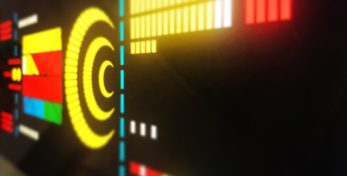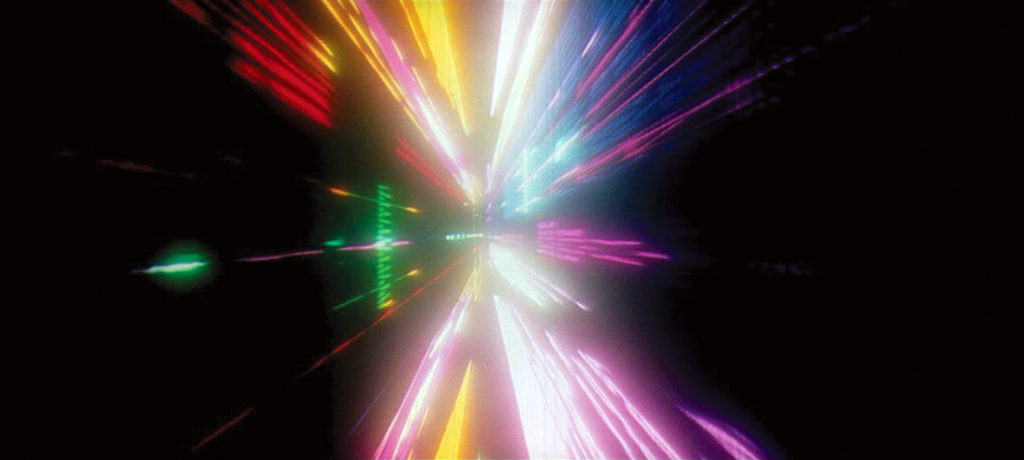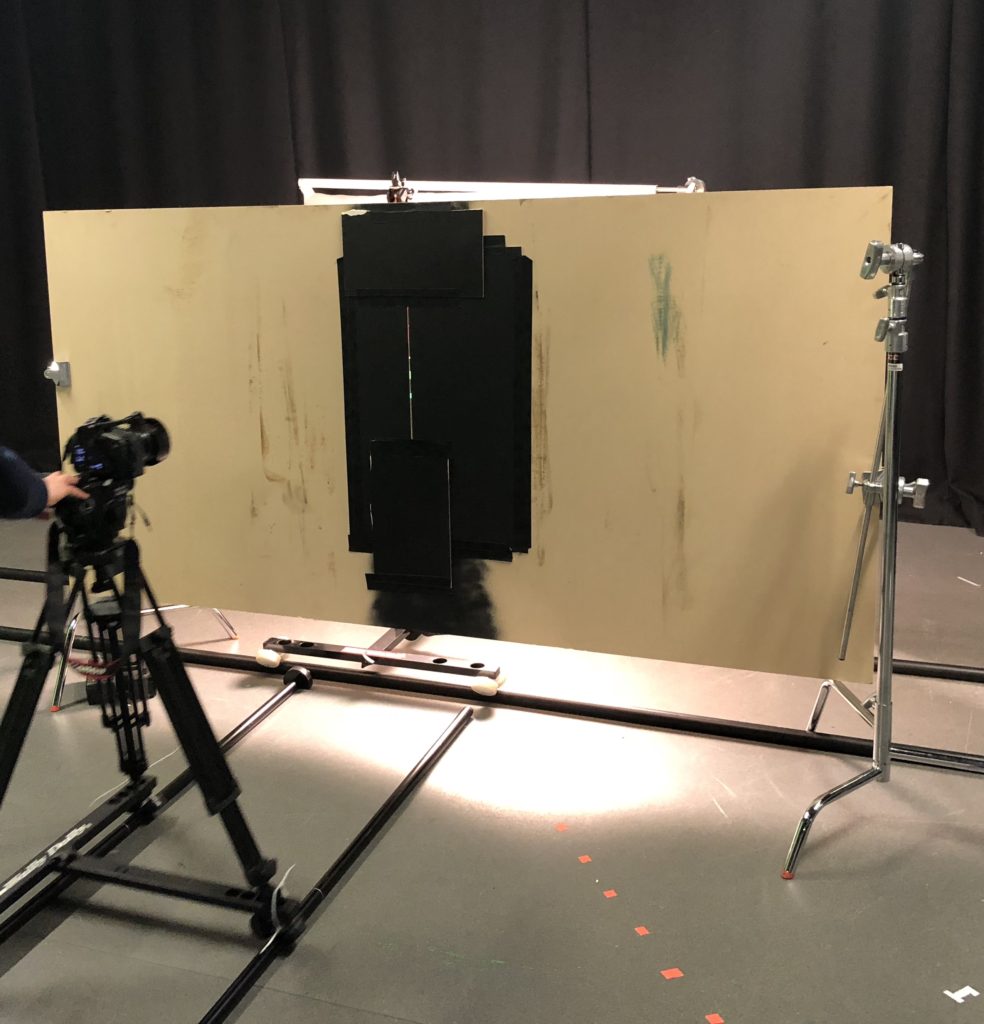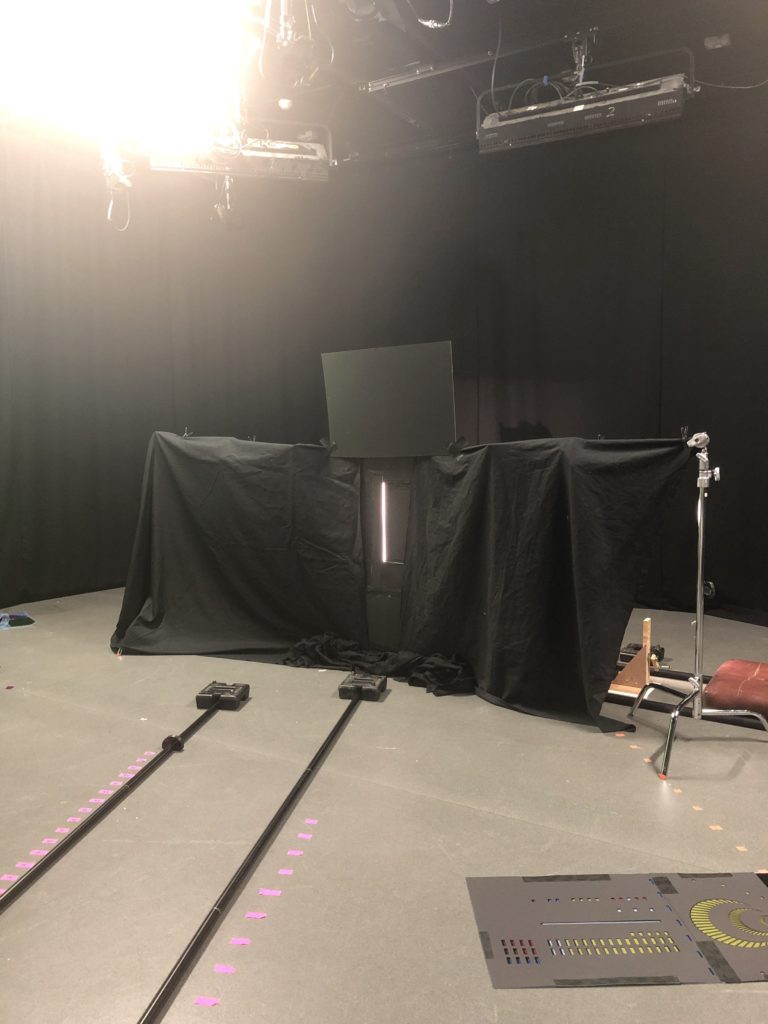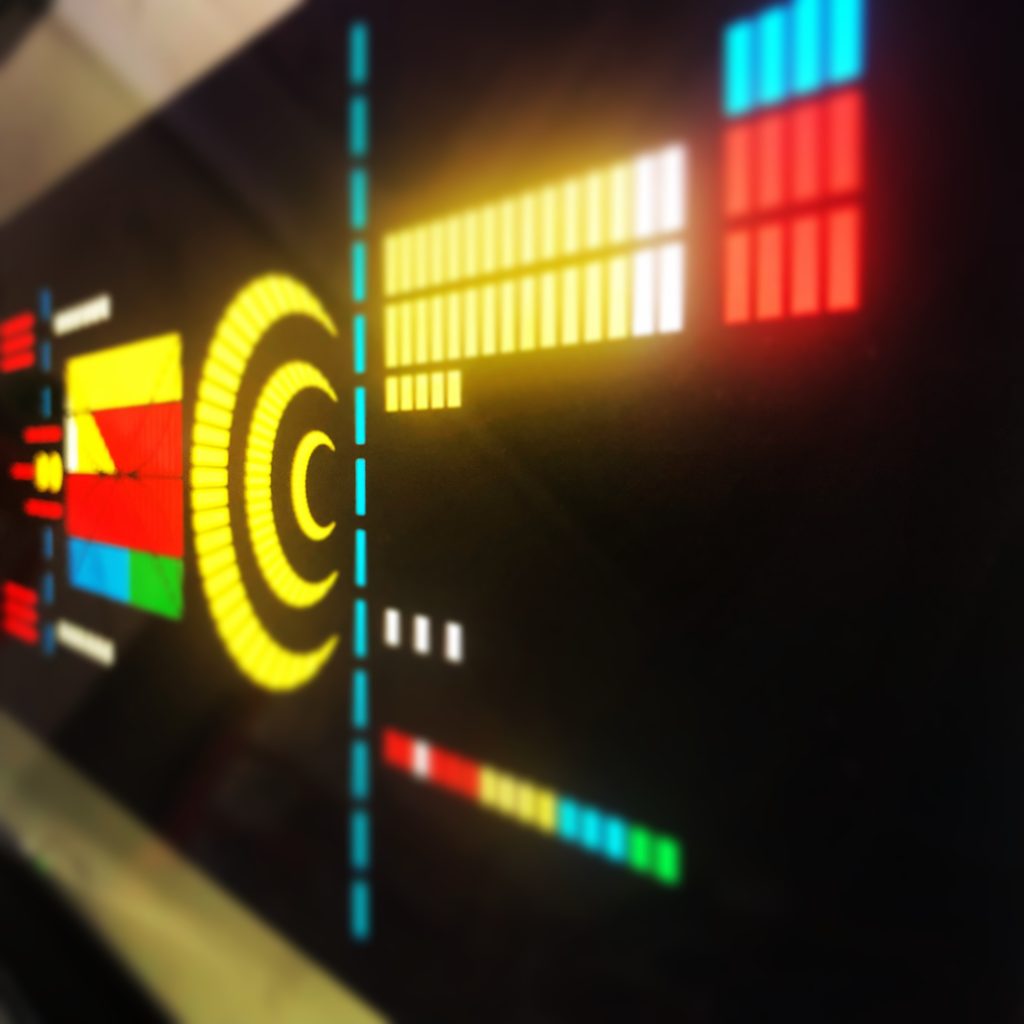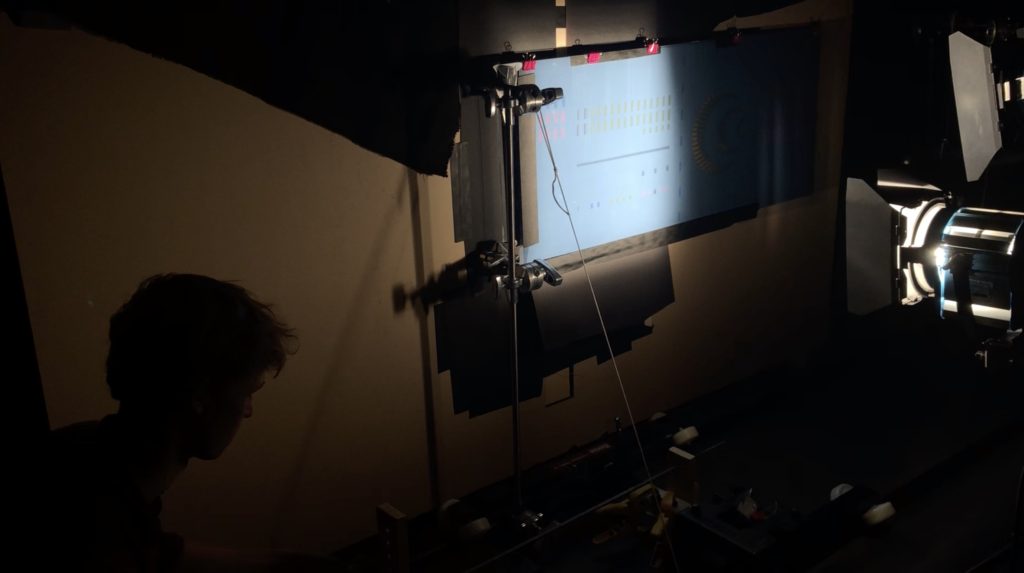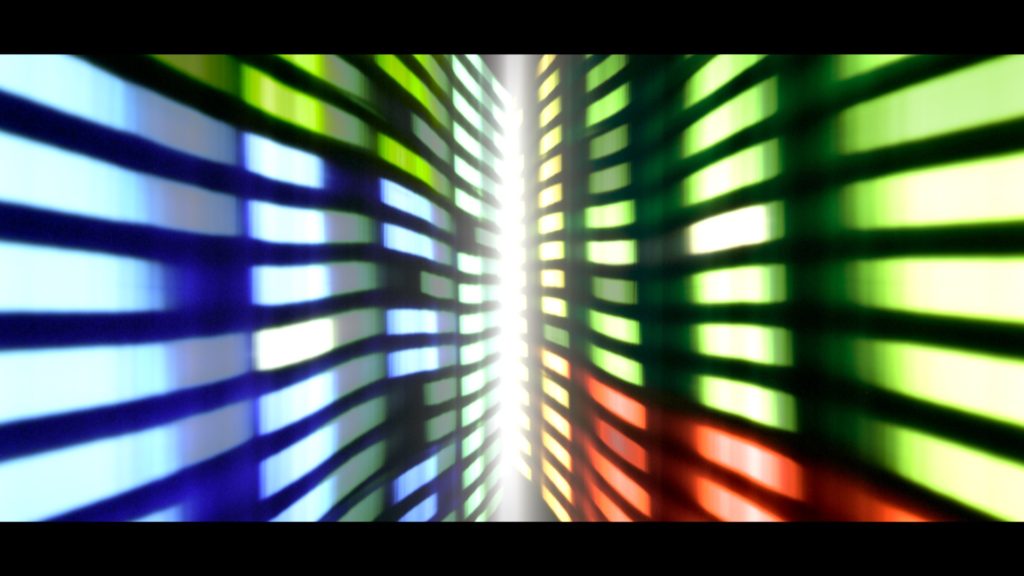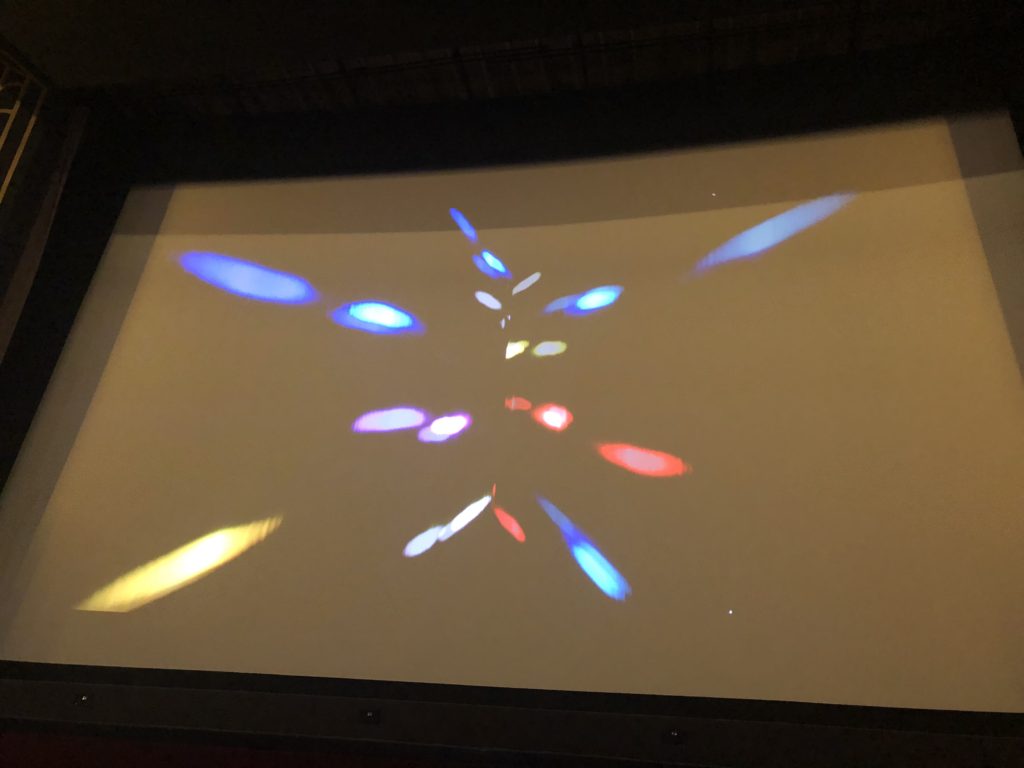In April 2018, I received a phone call from an insert producer for BBC’s The One Show. Katharina Kubrick had been approached by them to participate in a special report to mark the 50th anniversary of the brilliant 2001: A Space Odyssey. Along with an interview featuring Katharina at the Kubrick Archive at LCC, they wanted to include a section in which the effects were recreated. Katharina was kind enough to recommend me, and I was happy to accept.
The brief was to recreate the slit-scan effect used in the famous Stargate sequence from the film, using similar techniques to the original and not CG.
My first thought was to use the TV Studio at work – the University of Hertfordshire in Hatfield, UK – to have as a base for the shoot, as it would need a light controlled environment. I also knew I would need to have a camera setup that wouldn’t be disturbed by others working in the space. It was conveniently May when we came to build the rig and record the sequence, which is when teaching has finished and the Studio is pretty empty and not in demand.
Knowing I couldn’t make this on my own, I began to assemble a team, and started with our excellent technical staff – Matthew Welch and Paul Roberts. We had a brainstorming meeting in which we watched the original footage and thought about how we would achieve it. We weren’t going to shoot with film cameras, but I suggested a stills camera on a long exposure. We looked online for written and video material on how the effect had been originally achieved and found some info, but not very much. I also contacted the Archive at LCC and received some notes by Douglas Trumbull, who designed the effects for the actual film.
Jan Harlan, Stanley Kubrick’s brother-in-law and later producer, put me in touch with Doug, who kindly emailed me with some additional information.
The principle of the effect is that as a design moves past a small slit of light, the camera also tracks in to the centre, giving off the impression of moving streaks and patterns of light coming from the centre and moving to the edges. In the original, this was done twice – once for the left side of the frame, and once for the right side. This was the only thing we decided to truly cheat on a computer, because making two sides would be too time consuming, so we only did one side and mirrored it to make the other side of the image.
We would have to build a panel, with a slit in it for a backlight to pass through, but we didn’t know the scale, the size of the slit needed, or how long our camera track needed to be. We also needed to find a way to make the design behind the slit move from left to right past it, as the camera moved too, and we didn’t know how fast that movement needed to be.
Paul and Matthew built a rig in the studio over the next week, working with black cloth, cutouts and lights, as well as a piece of perspex with coloured gel strips on it, which was moved with a hand crank to make it pass the slit. After a lot of testing, first by Paul and then with my input, we worked out the optimal number of hand crank rotations needed and the length of the camera exposure and timing on the track needed in order to produce the optimal result. We marked the floor along the track with tape for every second of the exposure, so that the operator could make sure they kept the same pace each time as they walked the camera along the track towards the slit.
Once this was done, we needed to do the real thing. I designed a number of panels based on the original film patterns I could make out, in Adobe Illustrator, and had them printed onto transparent perspex. Unfortunately the light was so bright it shone through the black ink and so we also laser cut the same pattern out of black card, and attached the perspex and card together so that the light only shone through the coloured shapes in the design. It worked brilliantly, but we realised the movement didn’t quite feel like it flowed exactly. We realised after each pass, we had to slightly “rewind” the design back past the slit and this made the movement flow.
I recruited three undergraduate students from the BA Film and Television degree, to now operate the rig. Connor, Shaun and Sam were really great and worked very hard to make the shoot work. It involved countless amounts of repetition – either walking the camera back and forth along the track for every shot, and at a steady speed; counting the seconds down with a stopwatch; or cranking the handle the exact number of rotations each time (which was exhausting!).
Once we completed the shoot – five design boards, and over 400 frames later, I imported the individual frames into Apple’s Motion software, mirrored it to make both sides of the image and tweaked the contrast and colour saturation slightly.
During the planning and the shoot, we were visited by One Show presenter Michael Douglas who interviewed me about the process and the recreation.
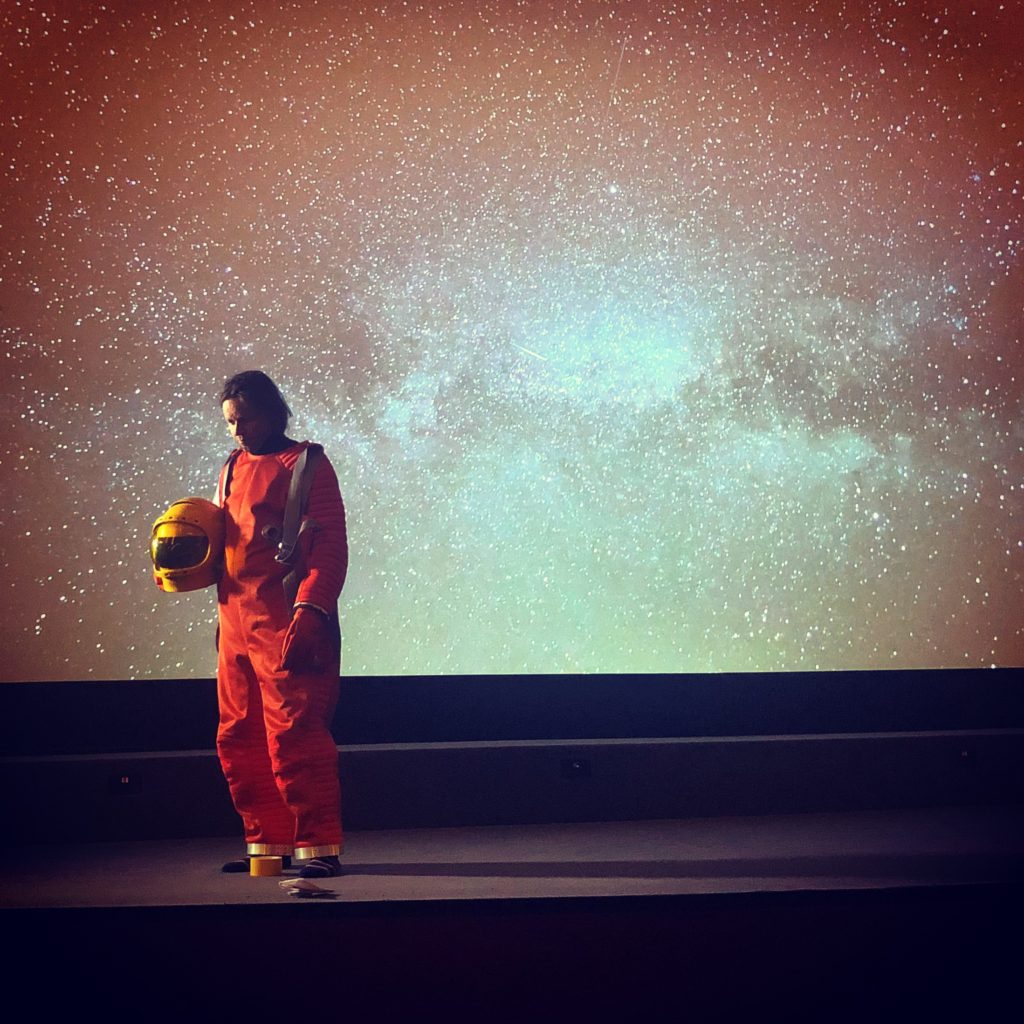
The work was brought to the Odyssey Cinema in St Albans (appropriately where I had organised the 35th Anniversary cast and crew reunion of The Shining a few years earlier) and we put it on the big cinema screen for Katharina and Michael to watch. Finally, the completed report was broadcast on BBC One on 27 September 2018. It was a huge honour to be asked to do this recreation and a great experience, but it couldn’t have been achieved at all without my brilliant team.

